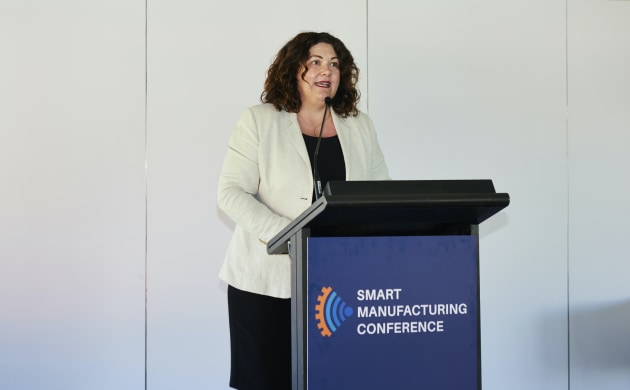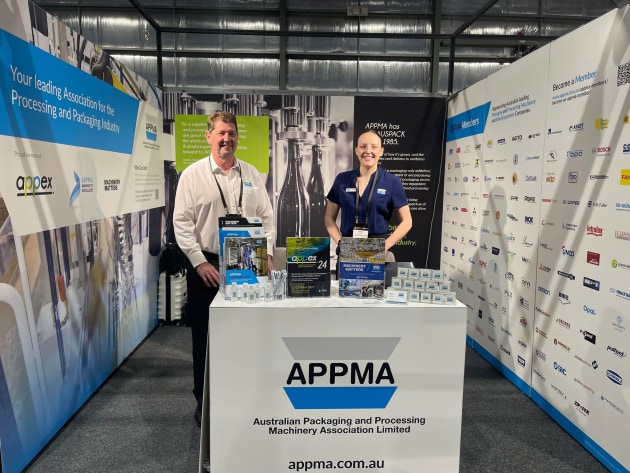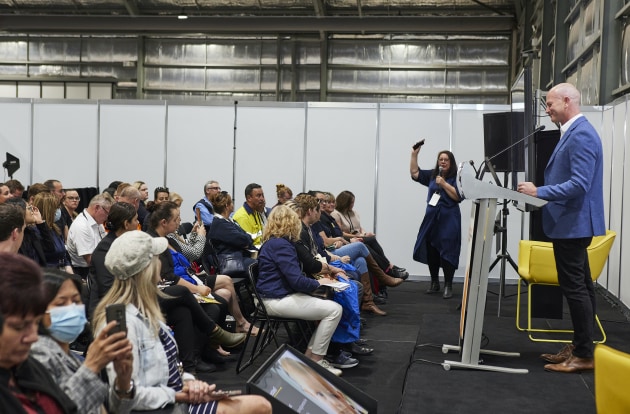Australia is perfectly poised to become a global leader in the production of high-value products across industries, but this cannot happen without the buy-in of local manufacturers, according to minister Meryl Swanson, federal member for Peterson.
This was her core argument of her opening speech at the much-anticipated two-day Modern Manufacturing Expo (MME) at the Sydney Showgrounds.
In her address, Swanson stated that critical investment needed to be made into the development of AI, robotics and quantum technology in the public and private sector, and reinforced the Labor Government's commitment to supporting these efforts through the $15 billion National Reconstruction Fund.

A further $1 billion has been allocated to specifically support the growth of advanced manufacturing.
Swanson went on to say that in order for Australia to be known as a global manufacturing superpower, the industry’s efforts needed to be underpinned by skills development, and harnessing the education system to create a pipeline for current and future industry needs.
“We need to showcase opportunities in modern manufacturing to attract young minds to re-engage in high technology manufacturing and break old stereotypes,” Swanson said.
With a focus on advanced and digital manufacturing tools, techniques and trends, the MME was the ideal platform to showcase these new opportunities for manufacturers.
“The Expo’s Expert Arena and Smart Manufacturing Conference were all incredibly well attended, indicating a hunger for knowledge and the industry’s appetite to fast-track the transition to modern manufacturing,” said Marie Kinsella, CEO of the International Exhibition and Conference (IEC) Group, organiser of the MME.
“The Innovation and Collaboration Zone – a dedicated area of the Expo where universities, manufacturing hubs and CRCs showcased the resources available to local manufacturers – was particularly well-received, with many visitors commenting that they had not been aware that there was so much support available to help manufacturers meet their growth goals.”
Collaboration was a core focus of the Expo, stemming from Kinsella’s belief that the transfer of knowledge is the catalyst needed to kickstart the transition to modern manufacturing.

“As Swanson said in her address, Australia is not lacking in manufacturing knowledge – we have always been a country that makes things. But this knowledge needs to be shared on a public platform for innovation to thrive,” Kinsella continued.
The public, collaborative platform provided by the MME also gave local businesses a rare opportunity to advertise their future-thinking manufacturing solutions to some of the biggest names in the industry.
“Many businesses just need to get their name out there and this is one of the best ways of doing it. You get everyone in one location to see and hear what you do, and you can’t lose,” said Michael Moran, CEO of the Australian Packaging and Processing Machinery Association (APPMA).

Top priorities for manufacturers in the next five years
Many manufacturers attended the Expo to not only get a sense of the new technologies and techniques shaping the industry, but also to get a better understanding of what factors they should prioritise in order to become a modern manufacturer.
These priorities were summarised perfectly by Brandon Miller, chief strategy officer at Wiley, in his presentation at the Expo’s Smart Manufacturing Conference.
Miller proposes that for the next five years, Australian manufacturers should focus on:
- Reducing their energy consumption: This makes both commercial and environmental sense, as it is hugely costly to power a factory using traditional fossil fuels. The good news is that with the abundance of renewable energy options on the market, it is becoming cheaper and easier to make the switch.
- Investing in automation: This is no longer an option – automation is needed on the factory floor for a manufacturing business to remain commercially viable. Luckily, technologies have accelerated rapidly in recent years, making implementation more affordable and convenient.
- Investing in their people: Research shows that 85 per cent of the jobs that will be needed in 2030 have not yet been invented. These new jobs will also require a new skill set. To meet this demand, Australia should focus on upskilling workers, encouraging skilled immigration and combatting ‘braindrain’ by making working conditions more attractive.
Miller’s presentation also included an explanation of Moore’s Law, and how this can be applied to manufacturing.

The term was coined by Gordon Moore in 1965 when he predicted that every two years the number of transistors on microchips would double, meaning that computational progress will become significantly faster, smaller and more efficient over time.
Doubling performance, while reducing size results in a reduction of costs, and when applied to manufacturing, this should be cause for optimism.
As Australia continues its progression to a circular economy and embraces Industry 5.0, and technologies such as robotics and additive manufacturing, Moore’s Law indicates that these progressions will have an accelerated return on benefits for manufacturers who choose to invest in the future.
“The 2022 MME gave attendees a glimpse into the future of the industry – and with the knowledge, resources and technology available right here in Australia, I’m happy to say that the future is looking very bright indeed, and we will be back in September 2023 with more,” Kinsella concluded.






